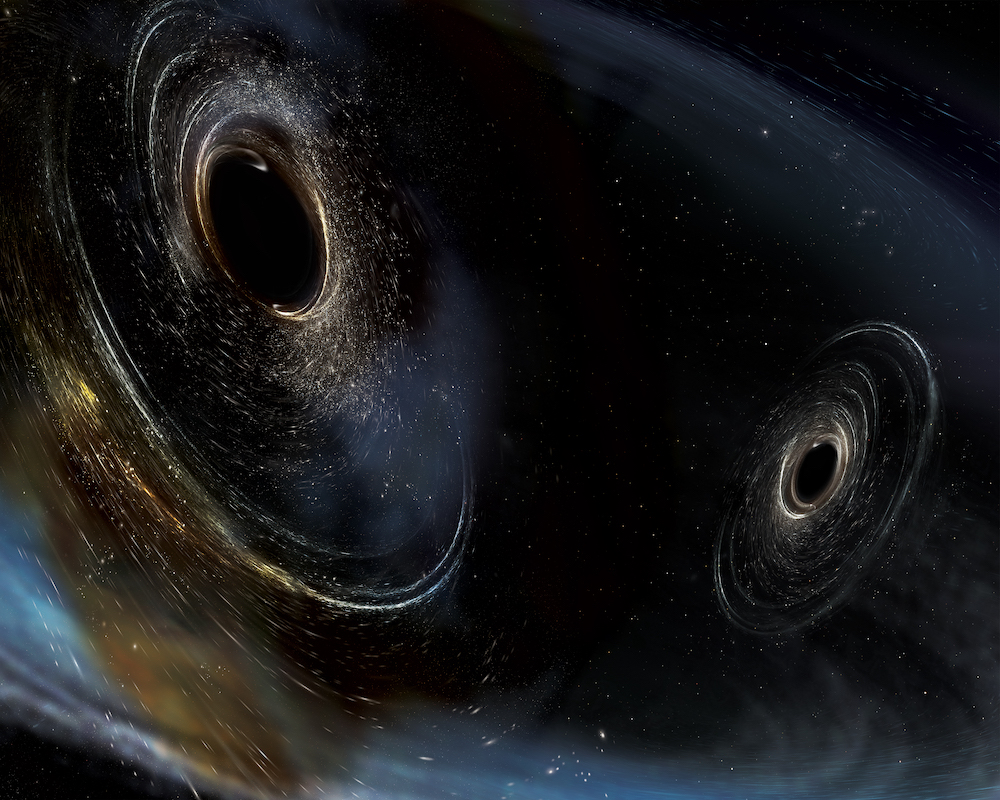Picture this: Approximately three billion years ago, two monstrous black holes crashed together—forming an even larger black hole—and creating ripples in the fabric of spacetime that, on January 4 of this year, were detected here on Earth.
Simulation of the binary black-hole coalescence GW170104. Video: Max-Planck-Institut für Gravitationsphysik (Albert-Einstein-Institut)
Videos by VICE
This is the third time that gravitational waves have been detected by the twin Laser Interferometer Gravitational-Wave Observatory (LIGO) detectors, further opening the door to a whole new way to observe our universe. The new work is published in Physical Review Letters.
“From this discovery, we can learn more about how stars actually explode,” said the University of Toronto’s lead researcher on the project, Harald Pfeiffer, who is an associate professor from the Canadian Institute for Theoretical Astrophysics. He’s part of the LIGO collaboration, which includes about 1,000 scientists worldwide. “It is further confirmation that there’s a large number of colliding black holes in the universe,” he told me over the phone.
When Albert Einstein developed his theory of relativity in 1915, no one thought there would ever be a way to observe gravitational waves. But in 2016, the first detection was announced, confirming what Einstein had believed. LIGO’s detectors give scientists a new way to observe black holes, and new information about them.
The most recently observed collision occurred between black holes that were 31 and 19 times the mass of our Sun—and produced a black hole 49 times the mass of the Sun, turning the rest of the mass into pure gravitational energy. It was twice as old and more than twice as far away as the first two events, occurring 1.3 and 1.4 billion years ago, respectively.
Read More: An Earth-Sized Telescope Is About to ‘See’ a Black Hole For the First Time
“We have further confirmation of the existence of stellar-mass black holes that are larger than 20 solar masses—these are objects we didn’t know existed before LIGO detected them,” said MIT’s David Shoemaker, spokesperson for the LIGO Scientific Collaboration, in a statement.
The collision of two black holes produces more power than all the light radiated from stars and galaxies at any one time.
“LIGO is establishing itself as a powerful observatory for revealing the dark side of the universe,” LIGO Laboratory executive director David Reitze said in a statement. The collaboration hopes to see other bizarre stuff out in the universe soon—like the smashing together of neutron stars, which are the collapsed cores of massive dead stars.
Subscribe to Science Solved It , Motherboard’s new show about the greatest mysteries that were solved by science




